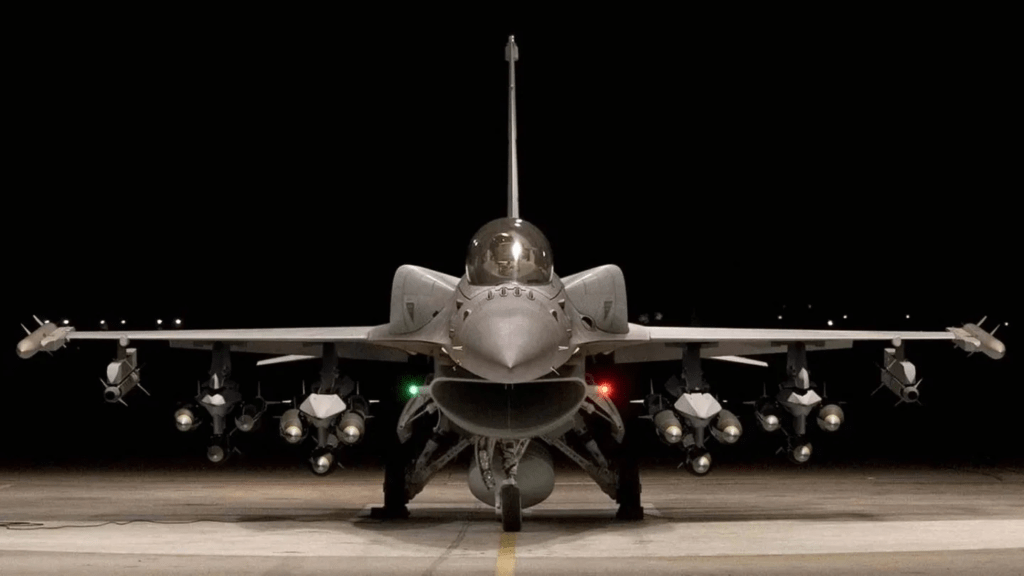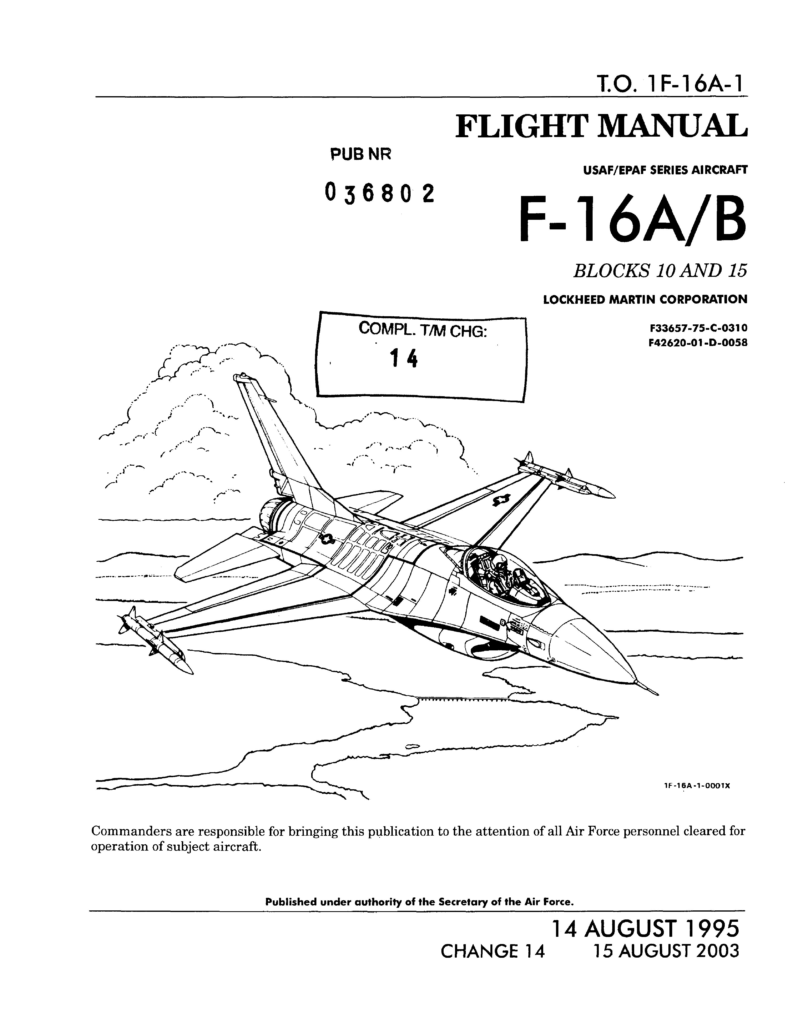DCS F-16C Viper: A Comprehensive Guide for DCS World and Falcon BMS Pilots
The DCS F-16C Viper, also called the “Falcon” is most frequently referred to as the “Viper” by its pilots, is one of the most iconic multi-role fighters in the history of military aviation. Its sleek design, powerful engine, and unparalleled maneuverability make it a favorite among both real-world aviators and virtual pilots in DCS World and Falcon BMS. This guide covers its performance characteristics, features, weapon systems, safety considerations, and more to help you master this incredible aircraft in your flight simulation experience.
A Brief History of the F-16

The F-16 was designed as part of the U.S. Air Force’s Lightweight Fighter program in the 1970s, aimed at creating a highly maneuverable and affordable aircraft. Since its first flight in 1974, over 4,500 F-16s have been built, serving in the air forces of more than 25 countries.
The F-16C model, featured in DCS World, represents an advanced iteration with upgraded avionics, weapons capabilities, and mission versatility. Known for its fly-by-wire system, the Viper combines responsiveness with stability, making it an exceptional dogfighter and a reliable multi-role aircraft.
DCS F-16C Viper – Performance Specifications
The F-16C Viper’s performance in DCS World closely mimics real-world capabilities. Here’s what you need to know:

- Engine: General Electric F110-GE-129 or Pratt & Whitney F100-PW-229 (29,000 pounds of thrust)
- Max Speed: Mach 2.05 (1,315 knots) at 40,000 feet
- Cruise Speed: ~480 knots (high subsonic)
- Service Ceiling: 50,000 feet
- Range: ~1,740 nautical miles (with external tanks)
- Rate of Climb: 50,000 feet per minute
- Combat Radius: ~340 nautical miles (fully armed)
DCS F-16C Viper – Critical Speeds for Combat Scenarios
Understanding and leveraging the Viper’s best performance speeds is key to dominating the skies:

- Cruise Altitude and Speed: Optimal cruise efficiency is achieved around 25,000–30,000 feet at 480 knots.
- Sustained 9G Turn Speed (2-Circle Fight): ~450 knots.
- Instantaneous Turn Speed (Corner Speed): ~330–440 knots, depending on altitude.
Maintaining these speeds during combat maneuvers allows you to maximize the F-16’s agility and energy retention. The F-16 Viper is super powerful but you can find yourself slow in a dogfight. The fastest way to reclaim airspeed ie energy to pull those crushing 9G’s is to release the stick level or even push forward a little to get a OG situation and it will accelerate like a rocket.
Additional VIPER Knowledge!

Real world F-16 fighter pilots say the 440 knot point is the ideal place to be in combat. Please be aware you can be pulling monumental Gs and still accelerate like a runaway train making your life hell at 440 knots. Beyond this speed depending on fuel and weapons drag you going to be at 500 to 600 knots in seconds.
Your turn circle will grow much larger and slower meaning your still going to be killed by that Mig-29 or rogue F-18 Hornet on PVP and PVE servers. Watch your speed, and really manage it! It will serve you well to have one eye always on the speed indication in the HMCS!
Flying PVE is where this F-16 Viper is a true monster! It decimates the opposition all to frequently from long ranges beyond the capability of most other fighters in DCS World at least. The Vipers ability to fly super high in the wispy thin low drag air at 40-50,000 ft air and launch missiles at stupid ranges.
It does this all while the while flying ridiculously fast killing yours truly in his Hornet unseen and very afraid! The Viper has no equal generally in this fight and is unparalleled by most other fighters.
- Latest CPU’s Available Now – Amazon.com
- Get a NEW GPU Best Performance – AMAZON.com
- Upgrade RAM Here today – AMAZON.com
- Prebuilt PC Options – AMAZON.com
DCS F-16C Viper – Weapons and Systems
The F-16C Viper in DCS World features an impressive suite of weapons and advanced systems, enabling it to perform a variety of missions:
Weaponry

- Air-to-Air Missiles:
- AIM-120 AMRAAM (Active Radar Homing)
- AIM-9 Sidewinder (IR-guided)
- Air-to-Ground Ordnance:
- GBU-12/GBU-10 Paveway II (Laser-guided bombs)
- AGM-65 Maverick (Air-to-ground missiles)
- Mk-82/83/84 (Unguided bombs)
- JDAMs (GPS-guided bombs)
- Gun:
- M61A1 Vulcan 20mm cannon with 511 rounds
DCS F-16C Viper – Key Systems
- Helmet-Mounted Cueing System (HMCS):
Allows pilots to lock targets and deploy weapons simply by looking at the target. - Ground Collision Avoidance System (GCAS):
Automatically prevents ground impact during high-G or disorienting maneuvers. - Advanced Targeting Pods:
Such as the LITENING or Sniper XR, enabling precision strikes and improved situational awareness.
Known Flying Attributes of the Viper

The F-16 is known for its incredible agility and ease of control, but its performance characteristics have both strengths and weaknesses:
- Energy Management:
The F-16 excels in maintaining energy in sustained turns, allowing it to dominate in two-circle fights. - High-AoA (Angle of Attack) Stability:
The fly-by-wire system ensures excellent stability at high angles of attack, reducing the risk of departure from controlled flight. - Speed Bleed in Tight Turns:
While the Viper’s instantaneous turn rate is impressive, excessive use of the stick can cause rapid speed loss. Pilots must carefully manage throttle and stick inputs during prolonged engagements.
Dangerous Maneuvers in the VIPER
While the F-16 is a forgiving aircraft, there are scenarios that demand caution:

- Over-G Situations:
Sustained high-G maneuvers beyond aircraft limits (~9G) can cause structural damage in real life, simulated in DCS with degraded performance or outright failures. You MUST do a G Warm Up even in DCS World before dogfighting. - High-Speed Stall:
At high speeds and low altitudes, pulling too aggressively can induce a stall, leading to loss of control. - Low-Speed, High-AoA Situations:
The F-16’s powerful engine can pull it out of trouble, but pilots must avoid relying on thrust alone at critical speeds. - Ground Avoidance in Low-Level Flight:
While GCAS provides a safety net, relying on it without situational awareness can lead to disaster, particularly when flying in mountainous terrain or during high-speed strafing runs.
DCS Features and Immersion
The DCS F-16C Viper module provides an incredibly realistic experience, thanks to its fidelity and attention to detail. Key features include:


- Fully Clickable Cockpit: Every switch and button is interactable, mirroring real-world functionality.
- Realistic Avionics: The module includes fully modeled radar systems, data link capabilities, and navigation tools.
- Comprehensive Flight Model: The F-16’s flight dynamics, including its relaxed stability and fly-by-wire system, are faithfully recreated.
- VR Support: Pilots can experience unparalleled immersion with VR, making every flight feel like the real thing.
The F-16’s Ground Collision Avoidance System (GCAS)
The GCAS, introduced in later F-16 models, is a life-saving system that actively monitors flight trajectory and terrain. If the system detects an imminent collision, it takes control of the aircraft to prevent impact. This feature is especially useful in DCS for low-level attack missions or when pilots are heavily engaged in combat. DCS at the moment DOES NOT operate like the real-world aircraft in that it warns you but does not take over flying it as the real GCAS system does.
For the DCS and Falcon BMS Enthusiast
In Falcon BMS, the F-16 remains a favorite due to its comprehensive dynamic campaign system and unmatched avionics fidelity. Similarly, DCS World brings the Viper to life with a balance of realism and challenge. The community either love or hate the Viper Module which is also true of the F-18 Hornet Module. The friendly banter on forums is extensive between these two communities.
The Viper is a joy to fly and fight with but you have to be 100% committed to flying it. SPEED SPEED SPEED control is essential to max perform the jet! Its wonderfully powerful and the DCS modules have been flown by Ex USAF?NAVY pilots like MOVER on his YOUTUBE channel and on his reports it now flies very similarly to the real aircraft in most ways! That’s a real feather in the hat of the Eagle Dynamics team and their partner developers who strive for such fidelity and accuracy.
I’m still going to kill you in my F-18C Hornet though :)! Yeah I know! See you on the servers Viper drivers!
Pilot Operating Manual
For enthusiasts who want to dive deeper into the F-16’s systems and flight characteristics, you can access the unclassified USAF Aircraft Tactics, Techniques, and Procedures Manual (ATOPS) here via a LetsFlyVFR.com Link. (Not an external link)
- Joystick / HOTAS – AMAZON.com
- Rudder Pedals – AMAZON.com
- Throttle Quadrant – AMAZON.com
- Gaming Chair – AMAZON.com
- VR Headset – AMAZON.com
Conclusion
The F-16C Viper in DCS World is a masterpiece of simulation, offering players the opportunity to experience one of the most capable multi-role fighters in history. With its exceptional speed, agility, and advanced systems, the Viper excels in both dogfights and precision ground attacks with the super authentic flight dynamics that makes it incredible. However, mastering this aircraft requires a deep understanding of its performance limits and tactical applications.
Yes this requires time! Remember how long it takes a real world fighter pilot to become proficient in a squadron. Years, so don’t expect to be promoted to a general and be an ace all in one day! Whether you’re soaring through the skies in DCS World or commanding a squadron in Falcon BMS, the F-16 promises a thrilling and rewarding flight experience. Fly safe, manage your energy wisely, and always keep an eye on your six! I’ll be behind you!
Author

Brendon McAliece (Aka Gunnie) is a military veteran with 23 years working on Jet Fighters, their weapons systems and ejection seat/module systems as well as munitions and R&D. Involved with flight simulation since the 1980s, he has flown all the major flight simulators over the years.
He is an Australian expat who has lived in Malaysia, UK, Saudi Arabia and more recently Thailand. He is a multi-lingual blogger who loves to share his life experiences here on LetsFlyVFR.com and DreamingGuitar.com, with his lifestyle and Travel experiences Blog plus his Dreaming Coffee website.
Learn More @
DreamingGuitar.com – DreamingCoffee.com – LetsFlyVFR.com
( HOME – BLOG – SHOP – ABOUT )
As an Amazon affiliate I may benefit from qualifying sales.










One response to “DCS F-16C Viper: A Comprehensive Guide for DCS World and Falcon BMS Pilots.”